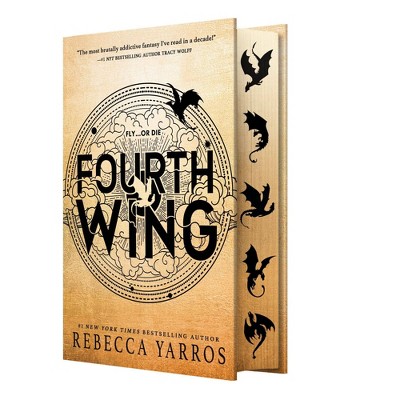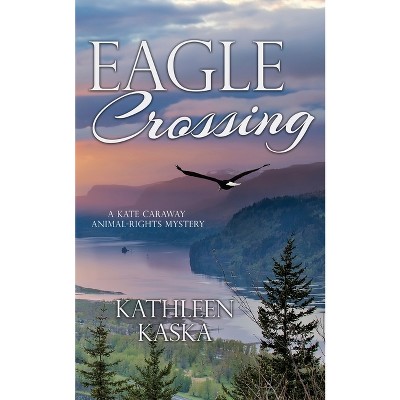The Man Who Saved the Whooping Crane - by Kathleen Kaska (Hardcover)

About this item
Highlights
- One man's odyssey to find the last of a dying breed Millions of people know a little bit about efforts to save the whooping crane, thanks to the movie Fly Away Home and annual news stories about ultralight planes leading migratory flocks.
- About the Author: Kathleen Kaska is a professional writer and the author of several books including the novel Murder at the Arlington.
- 224 Pages
- Nature, Environmental Conservation & Protection
Description
About the Book
A chronicle of the efforts of Robert Allen Porter, an ornithologist with the National Audubon Society, to find the only remaining whooping crane nesting site in North America in an effort to save the nearly extincted species.Book Synopsis
One man's odyssey to find the last of a dying breed
Millions of people know a little bit about efforts to save the whooping crane, thanks to the movie Fly Away Home and annual news stories about ultralight planes leading migratory flocks. But few realize that in the spring of 1941, the population of these magnificent birds--pure white with black wingtips, standing five feet tall with a seven-foot wingspan--had reached an all-time low of fifteen. Written off as a species destined for extinction, the whooping crane has made a slow but unbelievable comeback over the last seven decades.
This recovery would have been impossible if not for the efforts of Robert Porter Allen, an ornithologist with the National Audubon Society, whose courageous eight-year crusade to find the only remaining whooping crane nesting site in North America garnered nationwide media coverage. His search and his impassioned lectures about overdevelopment, habitat loss, and unregulated hunting triggered a media blitz that had thousands of citizens on the lookout for the birds during their migratory trips.
Allen's tireless efforts changed the course of U.S. environmental history and helped lead to the passage of the Endangered Species Act in 1973. Though few people remember him today, his life reads like an Indiana Jones story, full of danger and adventure, failure and success. His amazing story deserves to be told.
From the Back Cover
Millions of people know a little bit about efforts to save the whooping crane, thanks to the movie Fly Away Home and annual news stories about ultralight planes leading migratory flocks. But few realize that in the spring of 1941, the population of these magnificent birds--pure white with black wingtips, standing five feet tall with a seven-foot wingspan--had reached an all-time low of fifteen. Written off as a species destined for extinction, the whooping crane has made an incredible and unlikely comeback.This recovery would have been impossible if not for the efforts of Robert Porter Allen, an ornithologist with the National Audubon Society. Allen's courageous nine-year crusade to find the last remaining whooping crane nesting site garnered nationwide media coverage. His search and his impassioned lectures about overdevelopment, habitat loss, and unregulated hunting triggered a media blitz that led to thousands of citizens helping to track the birds during their migratory trips.In the decades since Allen and his team first searched for the whooping crane nesting site, the population has slowly increased. Dozens of organizations now see to their protection, and hundreds of scientists and volunteers help raise their young, document their numbers, lobby for funds, and devote innumerable hours to the white bird's continued survival. Today, whooping cranes number close to 400 in the wild. While not as large a number as might be wished, biologists and ornithologists are encouraged by the increase.During his quest to save diminishing bird populations, Allen lived weeks at a time in a tent, running tests in a makeshift laboratory, cooking over a wood fire, and fighting off annoying creatures raiding his camp. He rode out a hurricane on a boat powered only by one tattered sail, survived life-threatening illnesses and a vicious stray dog attack, endured extreme heat and cold, storms, mosquitoes, bloodsucking black flies, deadly stints of dehydration, and the start of the Cuban revolution. While searching the Canadian wilderness for the nesting site of the elusive whooping crane, he became lost for weeks after his only connection to the outside world, his radio, malfunctioned. Allen's tireless efforts changed the course of U.S. environmental history and helped lead to the passage of the Endangered Species Act in 1973. Though few people remember him today, his amazing life reads like an Indiana Jones story, full of danger and adventure, failure and success. Kathleen Kaska is the author of several books including the novel Murder at the Arlington.About the Author
Kathleen Kaska is a professional writer and the author of several books including the novel Murder at the Arlington.Shipping details
Return details
Trending Poetry











